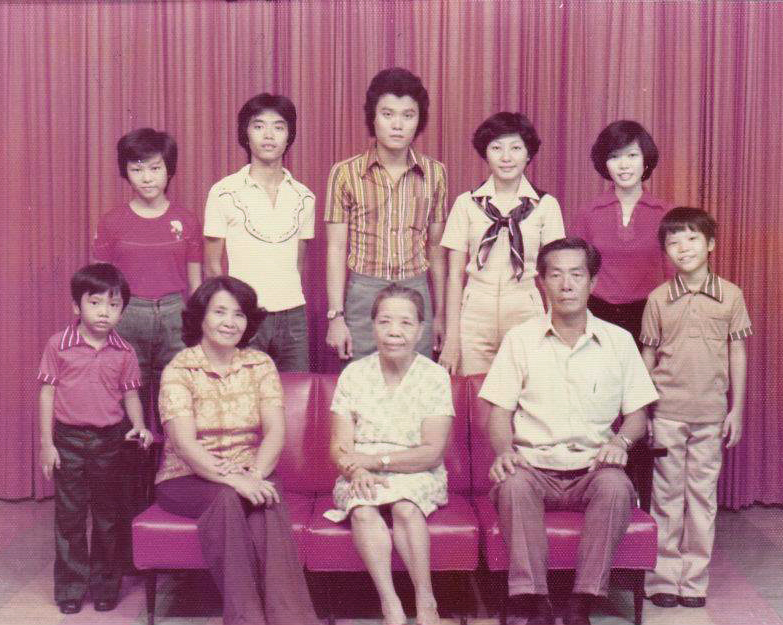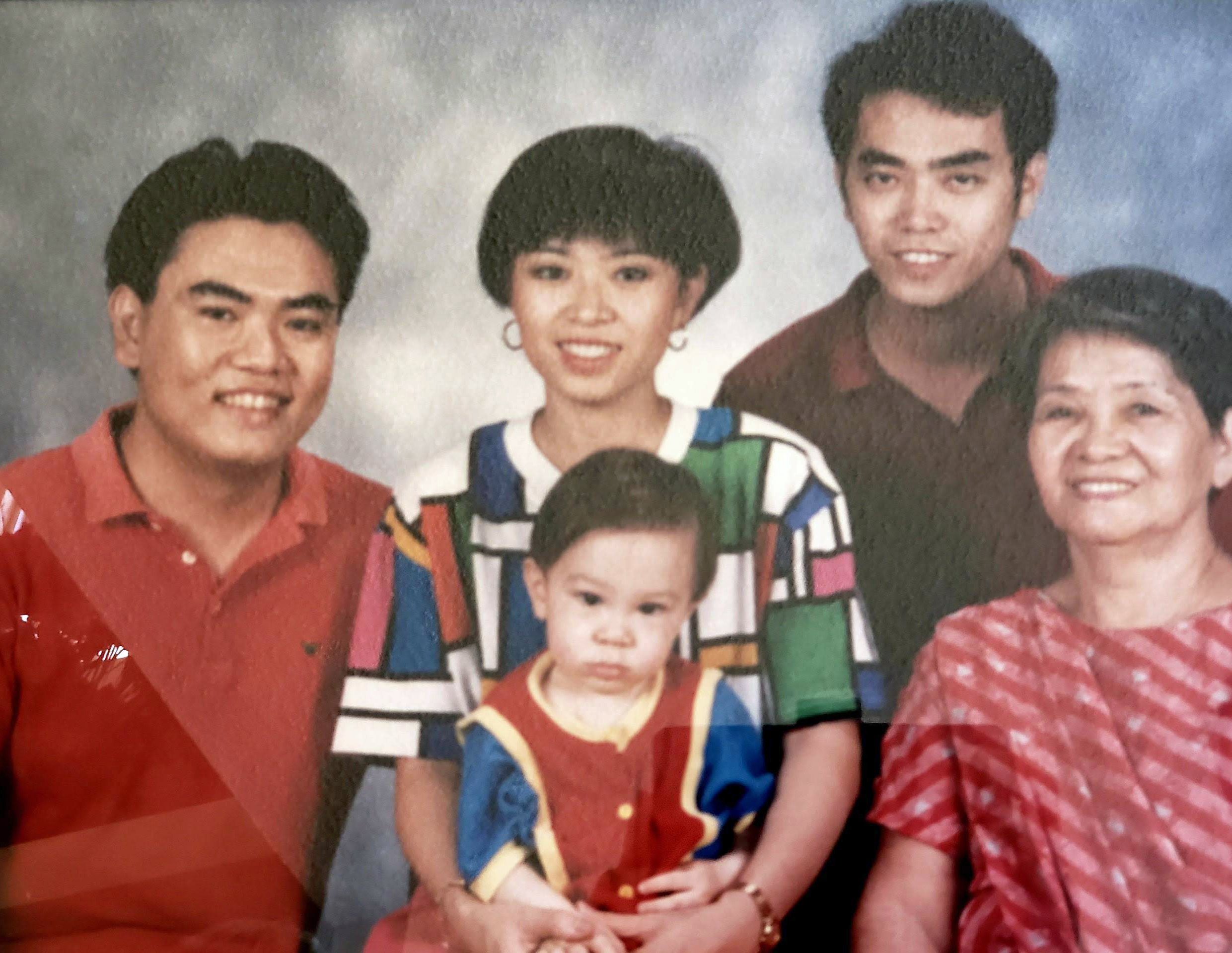
Bridging two worlds oceans apart
Denver Water is very proud of our diverse workforce. We asked a few of our employees to share their culture and experiences for Asian Pacific American Heritage Month, which occurs in May and celebrates the achievements and contributions of Asian Americans and Pacific Islanders in the United States.
Jason Kearns grew up a Colorado boy in Larkspur, south of Denver, but his roots reach across an ocean.
His father’s family hails from Colorado’s high country, but his mom grew up in the Philippines, the child of Chinese refugees.
With one foot in the U.S. and another in the Philippines, where most of his Chinese family lives, Kearns is grateful for his American upbringing and values the Chinese culture that shaped him.
Today, Kearns works on Denver Water’s procurement team, the group responsible for buying and contracting goods and services for the utility that supplies drinking water to 1.4 million people across the metro area.
He grew up a biracial kid in Douglas County, but remembers the unique aspect of his childhood was that his grandmother lived with the family.
“In elementary school, I was really the only Asian kid in Larkspur, but I never noticed. What stuck out to me was that no one else’s grandmother lived with them, and I thought that was strange,” he said.
Kearns calls his grandmother “Ama,” which is grandmother in Chinese, and she still lives with Kearns’s mother today.
“Because my Ama was there with me all the time, we have a very strong relationship and I was able to stay connected to my Chinese heritage,” said Kearns.
Kearns’s grandmother was born in Fujian, a southern Chinese province.
She was 5 years old during World War II when Japan invaded China. Her family was on vacation in the Philippines where her grandfather had a merchant business. They received news of the invasion and never returned to China.
When Pearl Harbor was attacked on Dec. 7, 1941, Japan invaded Philippines. The family of 12 fled to the mountains to hide from Japanese troops.
Kearns’s grandmother did not complete elementary school. She and her sisters never returned to school after the Japanese occupation ended. Instead, she and her sisters stayed home to help raise their brothers, as was expected in their culture.
She married and had seven children. The family struggled to make ends meet.
“My mom and her siblings grew up poor. The kids would tutor other students in town to earn money and Ama would sell newspapers and barter for food with farmers when they needed extra money Although they were poor, there were much poorer farmers living in the neighboring rural areas,” said Kearns.
Although life was difficult, it instilled a strong work ethic in Kearns’s mother.
She received a partial scholarship to attend college at the University of San Jose Recoletos in Cebu City where she studied accounting. She worked at a video store throughout college to help pay for her schooling.
After graduating, she was granted a work visa and traveled to Arlington, Virginia, where she obtained her CPA and worked as an accountant.
“My mom is now a financial analyst. It’s amazing to know she came to this country with nothing and worked hard to define her life and build her career,” said Kearns.
While working in the U.S., Kearns’s mother met a patent attorney, and they married.
“After I was born, we moved to Larkspur, Colorado, and my parents moved my grandmother from the Philippines to live with us. She pretty much raised me while my parents worked,” said Kearns.
His grandmother exposed Kearns to many Asian languages, as well as the foods and traditions that are part of the Chinese culture.
Kearns’s grandmother speaks several languages, including the Philippine dialect Visayan, the Chinese dialects Hokien and Mandarin, and English.
“American television shows like ‘MacGyver’ and ‘Dr. Quinn Medicine Woman’ were my grandmother’s English tutors when she came to America,” said Kearns.
“With only a fourth grade education, I am amazed at how many languages my grandmother can speak and how quickly she learns things. Many different dialects are spoken in the Philippines and because her children and grandchildren are spread out across the country, Ama has to be able to understand them all to communicate with them. It’s really impressive,” said Kearns.
In addition to exposing Kearns to a variety of languages, food is also an important part of his Chinese culture.
“I’m definitely not afraid to try new things,” he said. “I’ve seen my grandma eat jellyfish, chicken feet and even entire fish — eyes and all. I have tried them all. The chicken feet are not my favorite like they are for my Ama. However, it’s really made me adventurous when it comes to food and is helpful when I travel to other countries.”
Kearns’s grandma prepares pork dumplings called “shumai” in bamboo steaming towers and she serves a special meal originating from her home of Fujian called “misua.” The meal consists of clear rice noodles, hard-boiled eggs and Chinese vegetables. A symbolic meal prepared for birthday celebrations, the noodles symbolize long life and the egg symbolizes the family core.
The family also celebrates the Chinese Lunar New Year and follow the culture’s birthday traditions.
In the Chinese culture, birthdays ending in nine are considered unlucky, so Kearns’s grandma has had two 90th birthdays — skipping her 89th.
Last year she officially turned 90 and the family traveled to the Philippines to celebrate. More than 100 friends and family members attended the party, all of them wearing red, the traditional color of celebration in Chinese culture.
Kearns has visited the Philippines, where most of his mother’s family lives, three times. Each time he visits he’s reminded of how fortunate he is to have been born and raised in America.
“It’s pretty humbling to see the poverty in which my mom grew up. Of course, there are nice tourist resorts in certain areas, but many parts of the Philippines are still very poor.”
Kearns said the most noticeable thing is the income gap.
“Many people make only $3 to $5 per day, while others have incomes equivalent to what we make in the U.S.,” he said.
“The Philippines is very poor and some of the big cities are extremely overcrowded. It is common for people to obtain work visas to leave the Philippines in search of new opportunities. I have cousins in the U.S. and Australia pursuing careers on work visas,” said Kearns.
Kearns’s cousins must go through tons of paperwork and document specific information to acquire work visas to leave the country in search of opportunities, or even to obtain travel visas.
“In America, I had the privilege of attending college, going to graduate school and choosing my career. I can get a U.S. passport and travel around the world whenever I want,” he said.
“We have so many freedoms and opportunities. I know I am extremely lucky,” said Kearns.
Seeing what his life could have been like had he been raised in the Philippines has made Kearns grateful for his mother’s move to America.
“I am very proud of my Chinese heritage. I am also extremely thankful for my American upbringing and the opportunities it has given me.”




